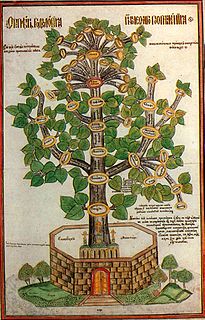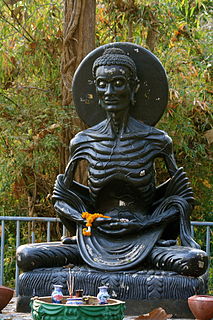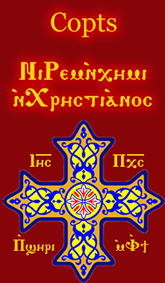This article may require cleanup to meet Wikipedia's quality standards.(October 2011) (Learn how and when to remove this template message) |
Saint Memnon the Wonderworker was alive during the second century A.D. [1] He was a hegumen of an Egyptian monastery. His feast day is April 28 (Eastern Orthodox liturgics).

Hegumen, hegumenos, or igumen is the title for the head of a monastery in the Eastern Orthodox and Eastern Catholic Churches, similar to the title of abbot. The head of a convent of nuns is called a hegumenia or ihumenia. The term means "the one who is in charge", "the leader" in Greek.

April 27 - Eastern Orthodox liturgical calendar - April 29
In the Egyptian desert he practised religious asceticism. [2]

Asceticism is a lifestyle characterized by abstinence from sensual pleasures, often for the purpose of pursuing spiritual goals. Ascetics may withdraw from the world for their practices or continue to be part of their society, but typically adopt a frugal lifestyle, characterised by the renunciation of material possessions and physical pleasures, and time spent fasting while concentrating on the practice of religion or reflection upon spiritual matters.
He is said to have performed a number of miracles, including causing a spring to gush forth, destroying a plague of locusts, curing illnesses and saving boats from destruction. [3] [4]

Locusts are certain species of short-horned grasshoppers in the family Acrididae that have a swarming phase. These insects are usually solitary, but under certain circumstances they become more abundant and change their behaviour and habits, becoming gregarious. No taxonomic distinction is made between locust and grasshopper species; the basis for the definition is whether a species forms swarms under intermittently suitable conditions. These grasshoppers are innocuous, their numbers are low, and they do not pose a major economic threat to agriculture. However, under suitable conditions of drought followed by rapid vegetation growth, serotonin in their brains triggers a dramatic set of changes: they start to breed abundantly, becoming gregarious and nomadic when their populations become dense enough. They form bands of wingless nymphs which later become swarms of winged adults. Both the bands and the swarms move around and rapidly strip fields and cause damage to crops. The adults are powerful fliers; they can travel great distances, consuming most of the green vegetation wherever the swarm settles.












